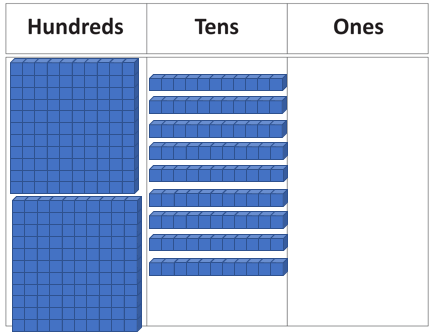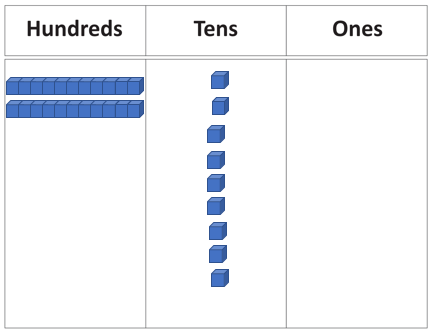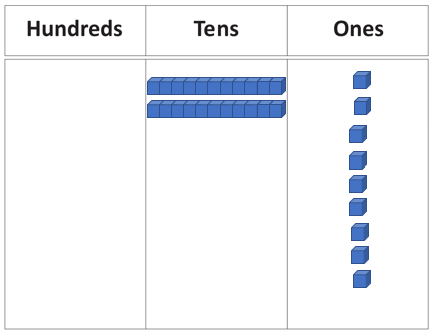Purpose
The purpose of this activity is to support students anticipating the result of dividing a whole number by ten. The quotient is extended to include three- and four-digit whole numbers.
Achievement Objectives
NA3-1: Use a range of additive and simple multiplicative strategies with whole numbers, fractions, decimals, and percentages.
NA3-2: Know basic multiplication and division facts.
NA3-4: Know how many tenths, tens, hundreds, and thousands are in whole numbers.
Required Resource Materials
- Place value materials (e.g., BeaNZ, Iceblock sticks, place value blocks)
- Place value board (page 2)
- Calculator
Activity
- Pose problems that require students to divide a two-digit whole number by ten. For example:
Make the number 290 with place value blocks.
What number have I made?
If I make each block ten times smaller than the size it is now, what number would I have? How would we describe the size of the new number?
Let students predict the result.
- Model exchanging each flat block (a hundred) for a long block (a ten) and each long block (a ten) for a unit cube (a one). Move the blocks into their relevant place value columns.
What number have we made? What is different about 290 and this number? Emphasise that the new number, 29, is one tenth of the original number, 290, because it is ten times smaller and 10 lots of 29 fit into 290.
Can we write an equation to describe this problem? (E.g. 290 / 10 = 29).
Key in 290 / 10 = 29 on the calculator and record the equation.

- Let the students anticipate, and then solve, similar problems with materials. Model the operation with place value blocks, if necessary, until students anticipate the result. Good examples are shown below. Ensure students express the relevant equations, using a suitable means of expression (e.g. written, verbal), as they work. Also consider allowing students to work in groupings that will encourage peer scaffolding and extension. Some students might benefit from working independently, whilst others might need further support from the teacher.
What number is one tenth of 340?
What number is one tenth of 516?
Next steps
- Progress from using materials to anticipating the results using only equations and words, and then patterns. For example:
- 70 ÷ 10 = 7
- 670 ÷ 10 = 67
- 5670 ÷ 10 = 567
- 45 670 ÷ 10 = 4567
- Discuss what happens to the place values of different numbers as they are divided by ten (they are made one tenth of the size).
- Every ten becomes worth one.
- Every 100 becomes worth ten.
- Every 1000 becomes worth 100. etc.
- Provide problems framed in real-life, meaningful contexts in which whole numbers are divided by ten. Examples might be:
- Ten rabbits need 310 carrots to eat for a week. How many carrots does one rabbit need for a week?
- How many $10 notes make $540?
- 850 bottles of water are needed for the school camp. The bottles come in packs of ten. How many packs do you need?
Add to plan
Level Three